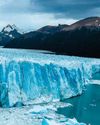NEXT-GEN FIGHTER JETS
How It Works UK
|Issue 204
Sixth-generation stealth fighter jets are coming. How will these advanced flying machines remain undetected in a world of increasingly sophisticated radar technology?

Almost everything about a classic fighter jet demands attention. These machines boast big, bold frames, sound like thunder as they soar through the sky at supersonic speeds and reveal their presence as glowing targets as they pop up on radar. But stealth fighter jets are an entirely different species, built to not only dominate the skies during combat, but disappear into them too.
Stealth fighter jets are engineered ghosts, designed to make an aircraft over 15 metres long undetectable. In a technological arms race as aircraft detection techniques improve, countries across the globe are racing to produce the most up-to-date stealth fighters so that if needed they can defend their airspace. Many countries have grouped together to form alliances, sharing ideas and signing agreements to use new fighter jets for their mutual interests. These international ventures combine top innovative technologies and demonstrate stealth superiority.
But what is a sixth-generation stealth fighter jet? Generally speaking, they're housed in non-reflective, matte coatings and have edges that blend smoothly into unusual-looking geometric shapes that manipulate how radar signals interact with their bodies. Meanwhile, the weapons that usually hang off jets in full display are concealed within the jet’s body inside internal bays. To be counted among the next generation of fighter jets, these aircraft require significant advances in stealth capabilities. For sixth-generation fighters, this is largely in the form of digital offence and passive defence in a world where computer power can outperform human analysis and improve response times to keep the aircraft undercover.
Bu hikaye How It Works UK dergisinin Issue 204 baskısından alınmıştır.
Binlerce özenle seçilmiş premium hikayeye ve 9.000'den fazla dergi ve gazeteye erişmek için Magzter GOLD'a abone olun.
Zaten abone misiniz? Oturum aç
How It Works UK'den DAHA FAZLA HİKAYE
How It Works UK
20 WEARABLE HEALTH TRACKERS
Whether you strap a wellness coach to your wrist or weave subtle sensors into your clothes, these devices are revolutionising how we track our health
9 mins
Issue 210
How It Works UK
SUPERPOWERED PLANTS
The world of plants is vibrant and diverse, just like this book.
1 min
Issue 210
How It Works UK
SECRET STORIES OF LOST BEASTS
We're all aware of the mighty dinosaurs that once roamed Earth, but there are so many weird and wonderful species that have been lost to time.
1 min
Issue 210

How It Works UK
ALL ABOUT BLIMPS
Is it a bird? Is it a spaceship? No... it's a non-rigid airship
2 mins
Issue 210
How It Works UK
SUPER QUESTERS MISSION: RAINFOREST MAGIC
Join adventurers Leo, Lilli and Bea as they transform into superheroes and journey to the rainforest in the pursuit of knowledge.
1 min
Issue 210

How It Works UK
HOW THE MIGHTY MAMMOTH RULED THE ICE AGE
Meet the prehistoric giants that roamed the Arctic Circle thousands of years ago
4 mins
Issue 210
How It Works UK
Have they found LIFE ON MARS?
Although it's by no means certain, scientists are slowly accumulating evidence that life once existed on the Red Planet
2 mins
Issue 210

How It Works UK
HOW FAST DO GLACIERS MOVE?
The speed at which a glacier flows depends on its mass, the depth and slope of the underlying rock bed and friction.
1 min
Issue 210

How It Works UK
HOW IN-FLIGHT WI-FI WORKS
This technology allows you to scroll to your heart's content while killing time at cruise altitude
3 mins
Issue 210

How It Works UK
HOW WIGWAMS WERE BUILT
Discover the construction and living conditions inside these traditional domed dwellings
1 mins
Issue 210
Listen
Translate
Change font size

